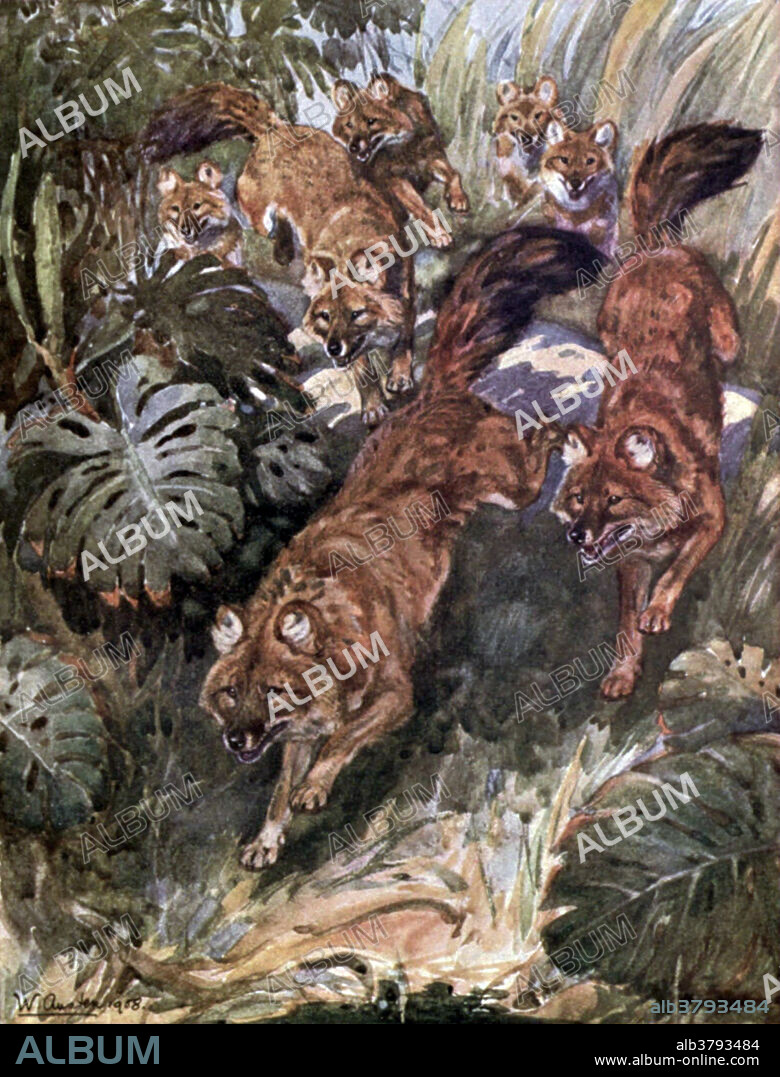alb3793484
Dhole, Endangered Species, Illustration

|
Añadir a otro lightbox |
|
Añadir a otro lightbox |



¿Ya tienes cuenta? Iniciar sesión
¿No tienes cuenta? Regístrate
Compra esta imagen.
Selecciona el uso:

Título:
Dhole, Endangered Species, Illustration
Descripción:
Ver traducción automática
The dhole (Cuon alpinus) is a canid native to Central and Southeast Asia. The dhole has been variously described as combining the physical characteristics of the grey wolf and red fox, and as being cat-like on account of its long backbone and slender limbs. The general tone of the fur is reddish, with the brightest hues occurring in winter. Dholes are more social than grey wolves, and have less of a dominance hierarchy, as seasonal scarcity of food is not a serious concern for them. Dholes are primarily diurnal hunters, hunting in the early hours of the morning. They rarely hunt nocturnally, except on moonlit nights, indicating they greatly rely on sight when hunting. Dholes are listed as endangered by the IUCN, as populations are decreasing and estimated at less than 2,500 adults. Factors contributing to this decline include habitat loss, loss of prey, competition with other species, persecution, and disease transfer from domestic dogs. Taken
Crédito:
Album / Science Source / Biodiversity Heritage Library
Autorizaciones:
Modelo: No - Propiedad: No
¿Preguntas relacionadas con los derechos?
¿Preguntas relacionadas con los derechos?
Tamaño imagen:
2742 x 3600 px | 28.2 MB
Tamaño impresión:
23.2 x 30.5 cm | 9.1 x 12.0 in (300 dpi)
Palabras clave:
1909 • 90S • AMENAZADO • ANIMAL • ANIMALIA • ARTE • ASIATICO • AÑOS NOVENTA • CANIDAE • CÁNIDO • CÁNIDOS • CARNE • CARNIVORO • CARNIVOROS • CHENNAI • CHORDATA • COMIENDO • CORDADOS • DECADA NOVENTA • DIBUJO • EN PELIGRO DE EXTINCIÓN • ESPECIES • FAUNA • ILUSTRACION • INDIO • LOBA • LOBO • MAMIFERO • MAMÍFEROS • MONTANA • MONTAÑA • PERRO • ROJO • S. XX • SALVAJE • SIGLO XX • SIGLO
 Pinterest
Pinterest Twitter
Twitter Facebook
Facebook Copiar enlace
Copiar enlace Email
Email
